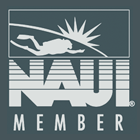This blog series details the travels and experiences of SeaTrek’s Gus Meloy, a geologist going through the pinnacle of his education. Six weeks of intense field and course work are described while providing insight about the country of New Zealand. This is a unique perspective he intends to share through a series of entries.
Week 3: Mapping Castle Hill Basin
With Westport in our rear view mirror, we were back on the road again in our vans heading south along the coast. We needed to buy supplies before heading through the Arthurs pass into the Alps. The plan was to stop in Greymouth to go to the grocery and hardware store. We bought meals to cook for the group in buddy pairs again. Mark, a graduate of Winona State University, was my cooking partner. We decided to buy food to make breakfast for dinner that week in as elaborate a fashion as we could; bacon, eggs, pancakes, all the usual items and more. Blueberries and chocolate chips to cook into the pancakes too. For lunch we went to a local pizzeria and ordered several different unique pizzas, the most so including fresh mussels. After eating way too much pizza we loaded up and headed east, inland towards Arthur’s Pass that would lead to our mapping location. I rode shotgun next to Karoly who pointed out all of the cool and interesting places along the way.
Arthurs’s Pass is named for the explorer who first made it across in 1864. It runs from Greymouth to Christchurch, connecting the West and East coast that would otherwise be isolated by the Southern Alps. We made lots of stops along the way to appreciate the mountain views. Earthquakes are a constant threat in New Zealand and especially along the Alpine fault which defines the Southern Alps. Engineers have to build bridges capable of withstanding devastating Earthquakes. In some cases, spillways route water out and over the road into the river valley in order to prevent it from compromising the structural integrity of the road. We took a break at a small restaurant called Kea Café in the village of Arthur’s Pass. The café was named for a rare indigenous bird called the Kea. Kea is a type of mountain parrot that lives in the alpine region of the South Island of New Zealand. Keas are incredibly smart and adept at stealing your food. Kiwi’s, what the locals call themselves, are very serious about not letting the Kea eat human food because it creates bad habits for the Kea, leading to dependency and improper diet. Nevertheless the brilliant looking bird is relentless, often paying customers a visit to negotiate away their lunch. In order to combat the Kea in a harmless, but effective fashion, the café tables each had a giant hollandaise container filled with water and equipped with a squeeze top. The containers were labeled “Kea gun” and were intended to be used to ward off the bird should it come along and say hello. It was only a matter of time, but Nick grabbed the Kea gun and fired a blast directly in line with Colin, spraying him entirely from the waist up.
“It was right behind you, I swear!” said Nick
From then on I was much more wary of Nick and his mischievous side. After that scene ended, we beat feet for our lodging for the week. We stayed at a family owned accommodation, Flock Hill Station. We unpacked the food into the communal kitchen and then took our own belongings to our rooms. The local mountains are popular for hiking and skiing and this was a popular ranch that people like to stay for vacation. The ranch itself was 36,000 acres, much of which was used for sheep pastures. Our mapping area 15 minutes down the road still included some of their property. The majority of our project would be in a national park area. For dinner we grilled kebabs and lamb, a New Zealand favorite, with some vegetables and enjoyed it before an evening lecture to talk about the area and executing the mapping project.
A separate building with a common room served as our classroom this week. The room was heated with a central wood furnace. There was a desktop computer in the corner that you could buy internet time to check your email. With us, we had a few portable whiteboards to draw visual aids. We sat in a circle and discussed how the next four days would go. The next day would be an introduction to all of the different rock unit types that we would see with in the mapping area. It’s important to have a detailed description of each unit because it is easy to get confused in the field. Something such as the presence of water can have a drastic effect on the appearance of the rock unit and make it resemble another. Color is often misleading, but mineral content and grain size are more useful.
During this introduction, each of us will make a stratigraphic column. This is a visual representation of how the rock units correlate to each other in time. The youngest rock unit is on top and the oldest is on the bottom. Thickness of each unit is scaled to be relative to each other. The purpose of using the column is so that you can determine the orientation of the rock units in the field. If you are in a creek bed and see an exposed rock face and can with certain determine that it is a rock unit included in your column, you can then use the column to see which rock units should be bordering the unit you are observing. In the simplest scenario possible, material would be deposited horizontally and discretely, meaning that environmental changes happen instantly. This is not reality but it would produce flat layer upon flat layer of different rock types with the youngest rocks on top and the oldest on the bottom. Assuming everything was deposited on a flat surface is a principle called Original Horizontality. This principal is not always correct, but it is the simplest scenario and gives geologists a starting off point. If evidence later found does not support the horizontality then it should in that case be dismissed. Our mapping area, we were told, will have a lot of structural deformation and therefore being able to determine if the rock units are right-side up or upside-down is very important. Clues in the field are sporadic and sometimes elusive. As a geologist, it is your job to collect as many clues as you can while surveying the area is question. Using your data and plotting it on the map, you formulate the simplest solution to account for the directly observed data, making assertions through leaps in logic from verifiable jumping points. It is easy to get lost in the field conceptually over what has happened to the structural geology here. Basic orienteering skills are useful as well so that you don’t get physically lost; the mapping area that we would be responsible for covering was 100 km2.
The three days after the introduction would be with us split into three pairs, each covering a different third of the mapping area. Each night, we would present our findings to the group and give advice over which parts to visit and spend more time and which parts could be skipped over. Descriptions of the hazards of the area were also appreciated. We could share ideas with each other, but ultimately we were graded on our own data and map so our work was our own. We would rotate sections each day and with each day, the bigger picture would become clearer.
My partner for the mapping project was Jim, a former marine and graduate of Guilford College in Greensboro, NC. Over the next three days we would bounce ideas off of each other to try and understand the geology better. Our first day of mapping, we had the Southwest section that included Mt. Sow and Piglet as well as a large portion of the Broken River. The plan was to get dropped off as close to Mt. Sow as possible to determine the rock type there and get measurements for it. The measurements that you take as a geologist are called strike and dip. If a rock unit is flat or horizontal, it has a dip angle of 0 degrees. If it is vertical, the dip angle is 90 degrees. Strike is used to give a standard way of reporting compass orientation of a rock unit. The standard way of measuring is by using the right-hand rule (different from physics), placing the direction of dip to your right and measuring the compass direction directly in front of you, 90 degrees less than the dip direction. By taking dozens of these measurements and plotting them out on a map of the area, you anchor in data points and start to narrow down the gaps that you have to fill with interpretation. The best maps have lots of data. What we found was that the prominent ridges in our mapping area, Mt. Sow and Piglet, were both limestone and from the same unit. There orientations were quite different and given there close proximity, some serious deformation must have taken place. Having covered the ridges on the plateau forming an ancient river terrace, Jim and I had lunch on the edge of the plateau before making the descent into the canyon. There was no ideal path down the canyon, but unfortunately we needed to get to the creek to refill our waters bottles. After much sliding and slipping and sometimes debris surfing, we finally made it to the bottom escaping fall danger and dehydration. We also found ourselves in another rock unit now that we were in the river valley. This represented the northern boundary of our territory to cover that day and the next day we would explore the Northwest section.
The presentations that night sparked debate over what was going on, constructive debate that is. The limestone seems to define the structure of the region and is easy to spot. The arid alpine climate limits chemical weathering, therefore exposing limestone by eroding the material around it preferentially. Limestone rocks stood out of the mountain in “flocks” along the ridge lines. This is where the name Flock Hill comes from. Our evidence seemed to point to some folding being present. Jim and I concluded that we should go to the ridges in the Northwest section to hopefully find the hinge or center of one of these folds. Doing so could pin down the dominant structural features of the region with actual data. That region and those hills, however, would prove to be rough, difficult terrain.
The limestone unit that made up Mt. Sow and Piglet was the same unit that made up Flock Hill. The unit cross-cut a hill in the middle of the mapping area next to the main road so we decided to start the day getting data on the limestone unit here. This was not for the faint of heart because it required taking measurements every 10-20 meters on a narrow step ridge, eventually making it into the Broken River. Once in the river, we made it upstream to base of an unnamed hill that we felt had lots of important information at the top. There wasn’t a path of least resistance on that hill. Instead, we stepped through a pot-hole ridden field with a swamp like consistency. There are no venomous reptiles in New Zealand which makes tramping through the dense backcountry easier to deal with, but the vegetation makes up for this by being extra volatile. Saw grass, bastard grass, and thorn bushes covered every square meter of this hill. To prepare, we both had worn long pants and sleeves and we were able to avoid most cuts and scrapes. At the top of the hill, after much struggle to get up there, we indeed found the fold hinge for the limestone unit and could confirm that we were looking at a series of folds called synclines and anticlines. The rain started soon after we reached the top which made the descent even more difficult. As it would turn out, we were the only group who decided to attempt to make it up there and we were happy that we did. At the end of the day we had gathered the information we were hoping to.
The last day of mapping for Jim and me was the Eastern section. This included Flock Hill and some more ridge lines. The rock types that day were going to be mostly all limestone, but by getting measurements along the ridges, we could further support our ideas for the structural geology. We hiked quickly, wanting to get our measurements taken by lunch so that we could spend the afternoon completing the actual map. At one point on Flock Hill, Jim and I were about to take the last measurement when we saw a pair of hawks flying nearby. They kept circling around each other calling out. It was a strange site and we wondered what they were doing flying around like that. Then suddenly, one of the hawks dived down and swooped right next to us. The other hawk did the same, and we realized we were under attack.
“We must be near the nest!”
Jim screamed, grabbing his clipboard to try and ward of the birds of prey.
“I’ll get the strike and dip”
I yelled back, army crawling with the compass towards the rock. I quickly took the measurements and yelled out the two numbers. I got up and we ran down the hill away from the hawks yelling the numbers over and over until we were a safe distance away and could write them down. Our brush with nature was over. We had collected all of the data we needed and could now spend the rest of the day with colored pencils and protractors, making our geologic maps. A lot of time and energy goes into making geologic maps but it is a true test of all the different skills a geologist has to learn. This would be the biggest part of our grade for the field camp, and I was proud of the work Jim and I did that week. The experience gave me confidence in my education over the last four years and gave me unforgettable lessons. The Castle Hill Basin has very complicated geology and was an ideal place to do field mapping. With the project behind us now, we would hit the road and log many miles before settling in a new location for more than two days. In the next blog, I will cover the glaciers of Franz Josef, as well as the city of Dunedin.




